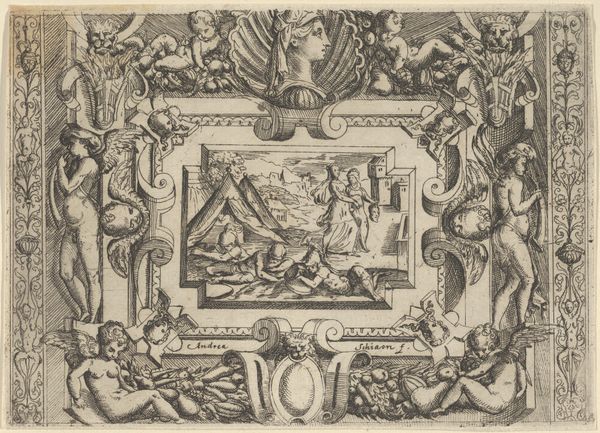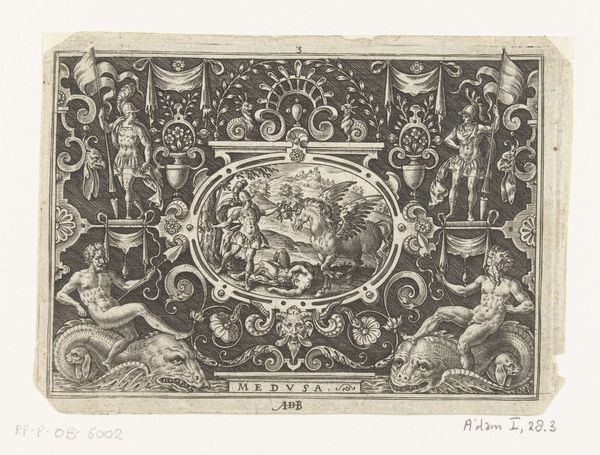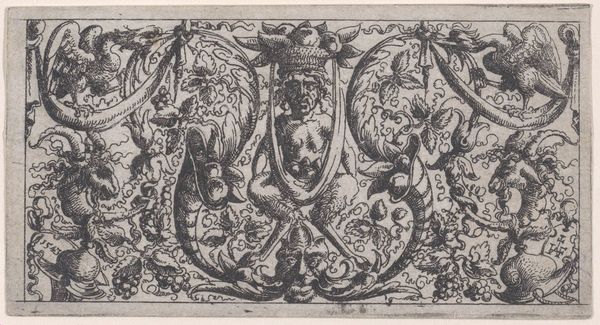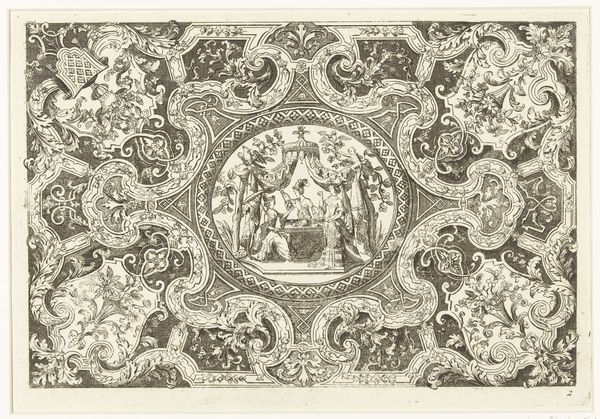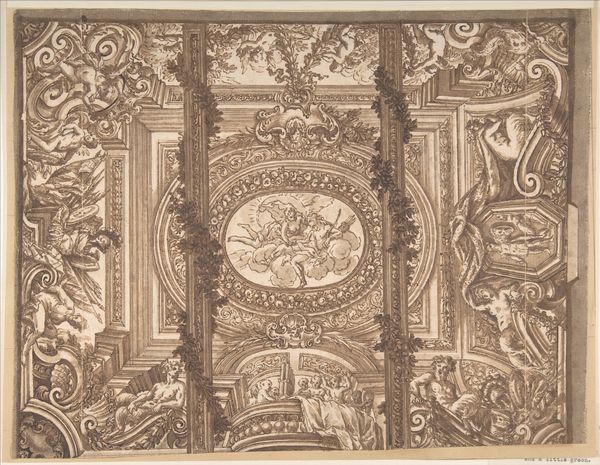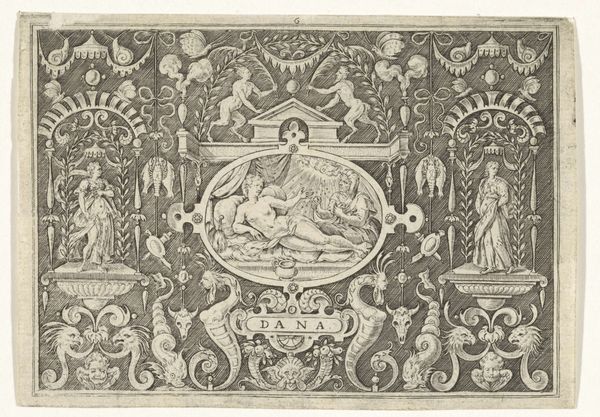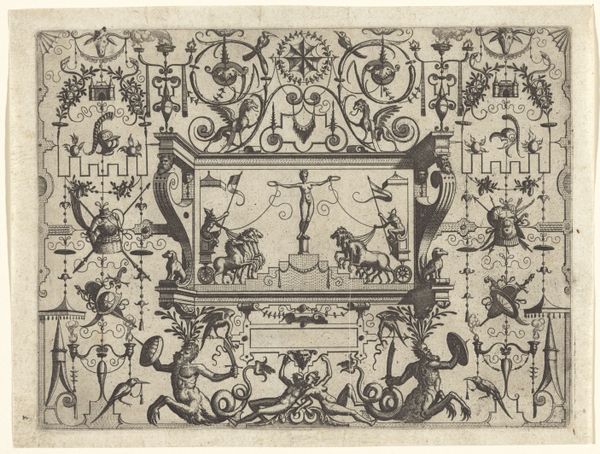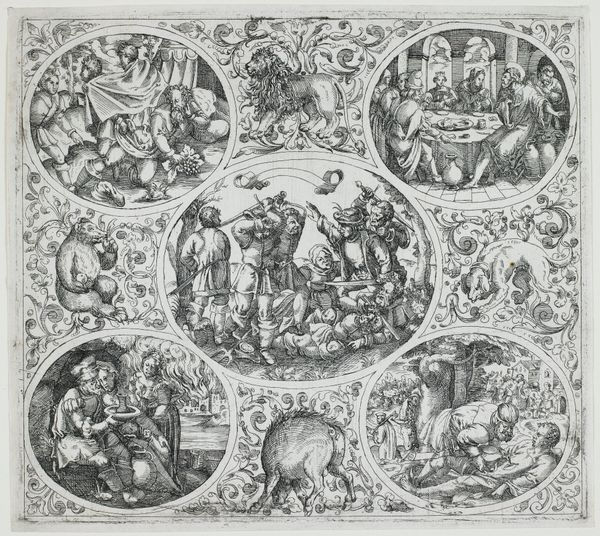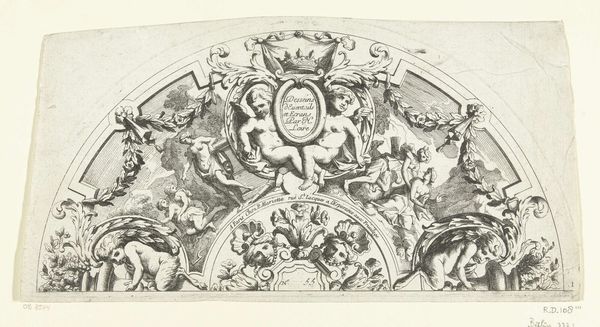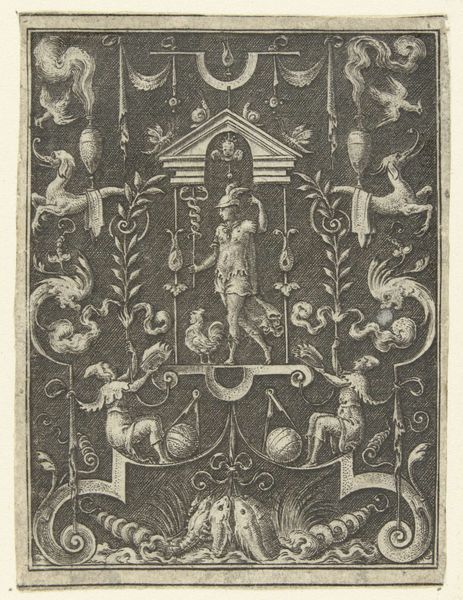
drawing, print, ink, engraving
#
drawing
#
allegory
#
pen drawing
# print
#
figuration
#
11_renaissance
#
ink
#
pen-ink sketch
#
pen work
#
history-painting
#
engraving
Dimensions: height 88 mm, width 122 mm
Copyright: Rijks Museum: Open Domain
Curator: Welcome. We're standing before "Cartouche: Perseus toont zijn Medusaschild aan Phineus" a pen and ink drawing by Abraham de Bruyn, created in 1584. It is currently held in the Rijksmuseum. Editor: My initial reaction is of elaborate containment. The central scene seems almost suffocated by the density of the ornamental framing; all those figures competing for attention! Curator: The cartouche style itself holds significance. It elevates the central scene, lending it a sense of historical weight, while simultaneously functioning as a visual container for the narrative. Think of cartouches used to depict Pharoahs - an act of cultural memory-making through representation! Editor: I see what you mean about elevating narrative. Looking closer at the oval scene, I’m struck by the tonal variations achieved purely through line work, a testament to De Bruyn’s skill with ink. The contrast between the shaded areas and the stark whites amplifies the drama. Curator: Exactly. The subject is a pivotal moment from Ovid’s *Metamorphoses* where Perseus petrifies Phineus and his followers by wielding Medusa's head, a symbol ripe with psycho-mythological implications of power, fear, and transformation. Medusa, of course, is so much more than the story tells us. Editor: Interesting you pick out this interpretation. Because if you allow me to go back to the framing elements for a moment, there's a certain biomorphism here, which undercuts all those symbols. The strange hybrid creatures are a nice counterpart, their presence destabilizes any one dominant meaning. Curator: The presence of the putti, dragons, and other mythical beings reinforces the symbolic atmosphere and visual spectacle but even their relationship shifts according to how we place them, who is placed to be ‘important’ through an ordered cultural view. De Bruyn orchestrates it all into a powerful cultural allegory of justice and retribution. Editor: I concede that's a persuasive overview, seeing how the pen and ink support it. De Bruyn has certainly built up a complex network of visual relationships through layering and contrast, prompting us to engage actively with it. Curator: Precisely! And hopefully providing a bridge across the centuries that separate us from its creation. Editor: A bridge indeed, that even brings up friendly debate along the way.
Comments
No comments
Be the first to comment and join the conversation on the ultimate creative platform.
